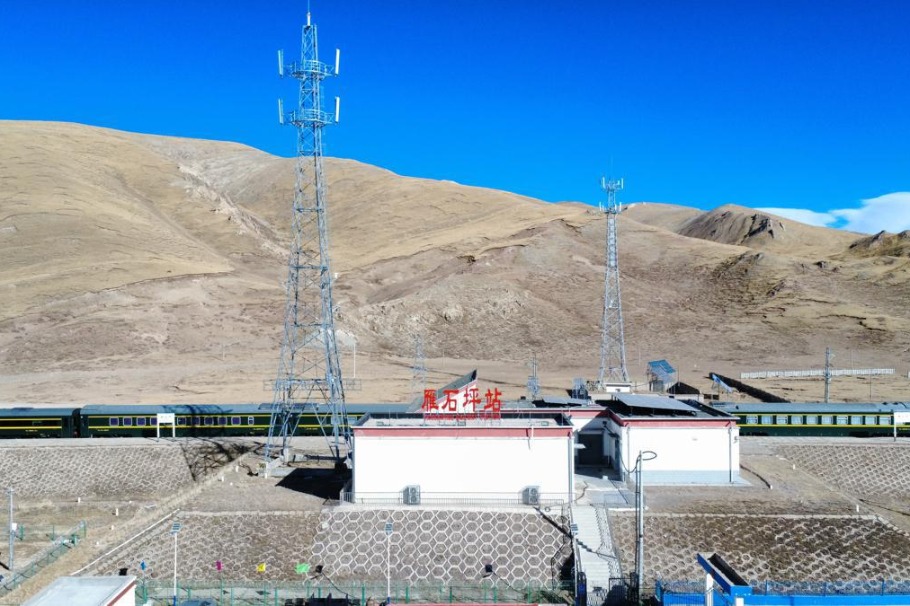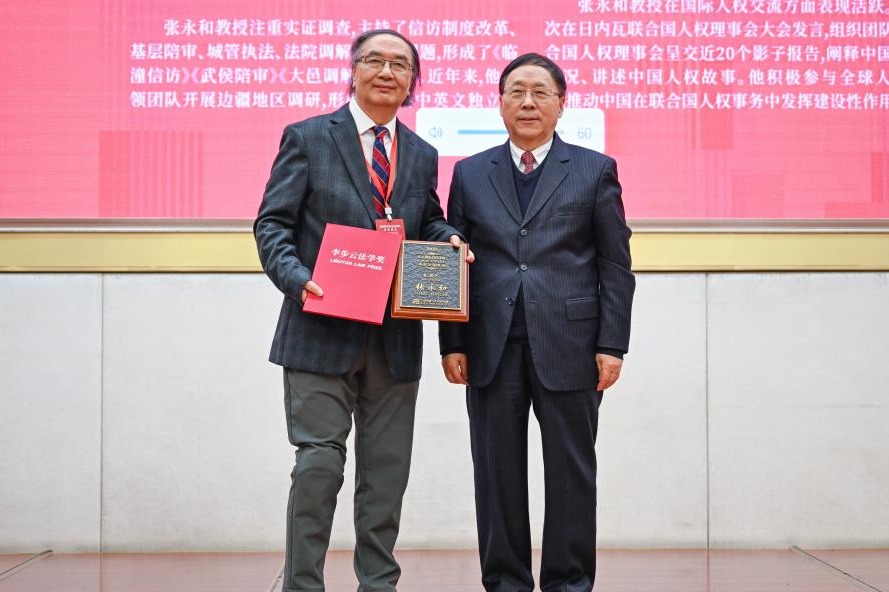Explainer: How does China's green development contribute to global climate action?

BEIJING -- Recent years have witnessed record-breaking heatwaves worldwide, making it clear that global warming is not merely a distant warning but a harsh reality.
Meanwhile, China, with its steadfast commitment and remarkable progress in green development, has emerged as a champion in the global transition to renewable energy, serving as a beacon of hope in the fight against climate change.
What has China achieved so far? What does it mean to the world? Here is what to know.
A GREENER CHINA
China has been making concrete steps toward its commitment to peak carbon emissions before 2030 and achieve carbon neutrality before 2060.
China's carbon dioxide emissions per unit of GDP decreased by 50.9 percent in 2021 compared to 2005, the base year for the country's climate contributions, according to recent reports submitted by China to the secretariat of the UN Framework Convention on Climate Change.
The country has been growing literally greener. China's forest coverage rate reached 25 percent by 2023, with forest stock exceeding 20 billion cubic meters. The annual carbon-sink capacity of China's forests and grassland has exceeded 1.2 billion tons of carbon dioxide equivalents, ranking first in the world.
Meanwhile, renewable energy expansion in China continues to set new records, with over 200 million kilowatts of newly installed capacity for renewable energy power generation in the first three quarters of 2024, accounting for more than 80 percent of total new installed capacity. In 2023, China accounted for 60 percent of the new renewable capacity added worldwide, according to World Energy Outlook 2024.
Electricity generated from clean energy accounted for 39.7 percent of the country's total power generation in 2023, up by around 15 percentage points from 2013, according to a white paper titled China's Energy Transition issued in 2024.
China is also a top player in reducing energy intensity, with 26 percent down since 2012. Its production and sales of new energy vehicles have topped the world for 10 consecutive years.
China's achievements in green development reflect its strong commitment to balancing economic development with environmental sustainability, said Naing Swe Oo, a senior advisory board member of Myanmar Institute of Strategic and International Studies.
"Through the ambitious carbon neutrality goals, energy structure adjustments and industrial decarbonization efforts, China has made significant progress in the transition to a more sustainable economy," he said.
THE GREEN GROWTH
Bearing fruitful achievements domestically, China has been assisting other countries in achieving green growth and strengthening their adaptation capacity for climate change.
For years, China has aided the construction of clean energy and environmental protection projects in developing countries.
For instance, under the China-Ethiopia-Sri Lanka Renewable Energy Technology Transfer Project, 11 green energy solutions have been installed covering 12 small and medium-sized demonstration sites and benefiting more than 50,000 people across five provinces in Sri Lanka and four regions in Ethiopia. They are expected to generate at least 70,000 kWh of energy — saving approximately 157,000 tons of greenhouse gas emissions every year.
Moreover, clean energy stations with Chinese investments have taken off in both Kazakhstan and Mali. The Zhanatas Wind Farm in Kazakhstan generates 350 million kWh of clean electricity annually, equivalent to saving 109,500 tons of standard coal and cutting carbon emissions by 289,000 tons every year.
The Gouina Hydropower Station in Mali has transformed West Africa's energy landscape since its 2022 launch. Generating 687 million kWh annually, the hydropower plant provides enough power for 1 million residents across Mali, Senegal and Mauritania, replacing 240,000 tons of coal and reducing carbon emissions by 630,000 tons yearly.
Kenya economist James Shikwati noted that China's experience in green and sustainable development provides valuable inspirations for Kenya and other African countries. "If China can produce more green products within Africa, it would be a significant benefit for the continent," he said.
Boasting the world's largest and most complete new-energy industrial chain, China is home to 70 percent of the photovoltaic components and 60 percent of wind power equipment worldwide. In 2023 alone, the country's export of wind and photovoltaic products helped reduce carbon emissions by 810 million tons in recipient countries.
"Solving China's problems also helps solve problems for many other countries," said Hoe Ee Khor, chief economist of the ASEAN+3 Macroeconomic Research Office.
"If a country has effective and low-cost green technologies, is committed to a global ecological civilization, practices free trade, and is willing to share its green technologies, then it can play a key role in shaping a postmodern, ecological global civilization," said Philip Clayton, president of the US Institute for Ecological Civilization. "China can play and is playing this crucial role."
A GREEN FUTURE
No matter how the international landscape evolves, China's determination and action for proactive climate response never changes.
It is one of the initial parties to the UN Framework Convention on Climate Change and among the first signatories and ratifiers of the Paris Agreement on climate change.
From 2016 to 2023, China supported other developing countries with roughly 24.5 billion US dollars in total climate-related funding.
Over the years, China has been active in promoting a fair and more equitable global climate governance system. Within the framework of the Belt and Road Initiative (BRI), China has signed a memorandum of understanding (MoU) with the UN Environment Programme on building a green Belt and Road for 2017-2022, launched the Initiative for Belt and Road Partnership on Green Development together with 31 countries, and formed the Belt and Road Initiative International Green Development Coalition with more than 150 partners from more than 40 countries.
"Through such initiatives as the BRI, China is helping other developing countries deploy green technologies, such as solar farms and wind power infrastructure. This not only promotes China's influence, but also accelerates the global green transformation," said Anna Malindog-Uy, vice-president of the Asian Century Philippines Strategic Studies Institute, a Manila-based think tank.
By October 2024, China, an active participant in South-South cooperation, had signed 53 MoUs on South-South cooperation addressing climate change with 42 developing countries, and had implemented nearly 100 projects focused on climate change mitigation and adaptation. Additionally, China had rolled out over 300 capacity-building programs in climate-related fields and provided training opportunities for over 10,000 participants from more than 120 developing countries.
With climate change and green development listed among its eight key areas, the Global Development Initiative proposed by China has won the support of an increasing number of countries and regions around the world. It has established more than 30 cooperation platforms, with over 1,100 projects launched, covering all 17 of the United Nations' sustainable development goals.
"There's no doubt that China's commitment to green development has positioned itself as a leader in the global fight against climate change, which is critical to global decarbonization efforts," said Malindog-Uy. "China's continued leadership in this field is likely to shape the future of the global energy markets and climate policy."
- Geminid meteor shower seen across China
- Sustainable agriculture in focus at Hainan forum
- Road accident in East China kills 4
- Health Bureau: Free Chinese medicine services for Tai Po fire victims
- Satellite launch marks a new milestone in UAE-China cooperation
- HK fire: 4,510 residents in shelters as support fund reaches HK$3.6b





































